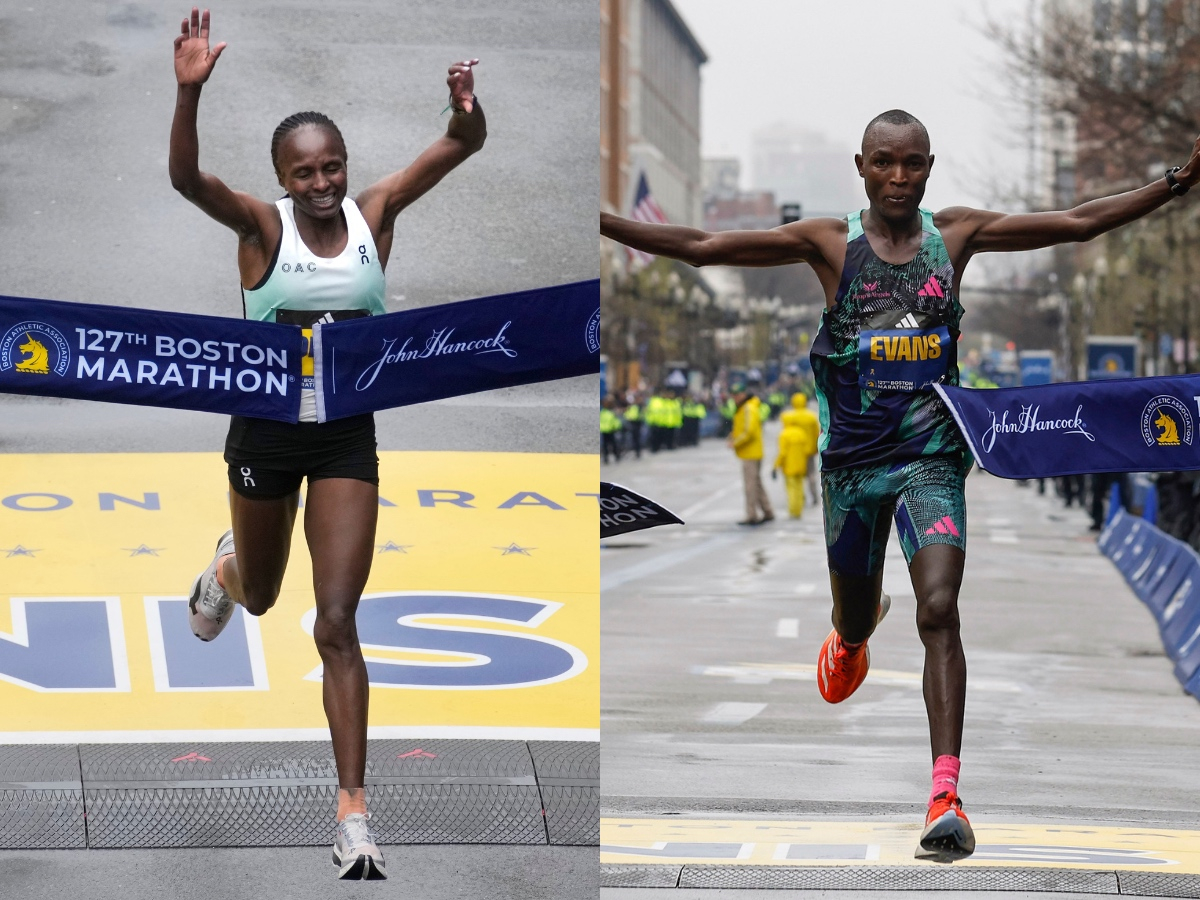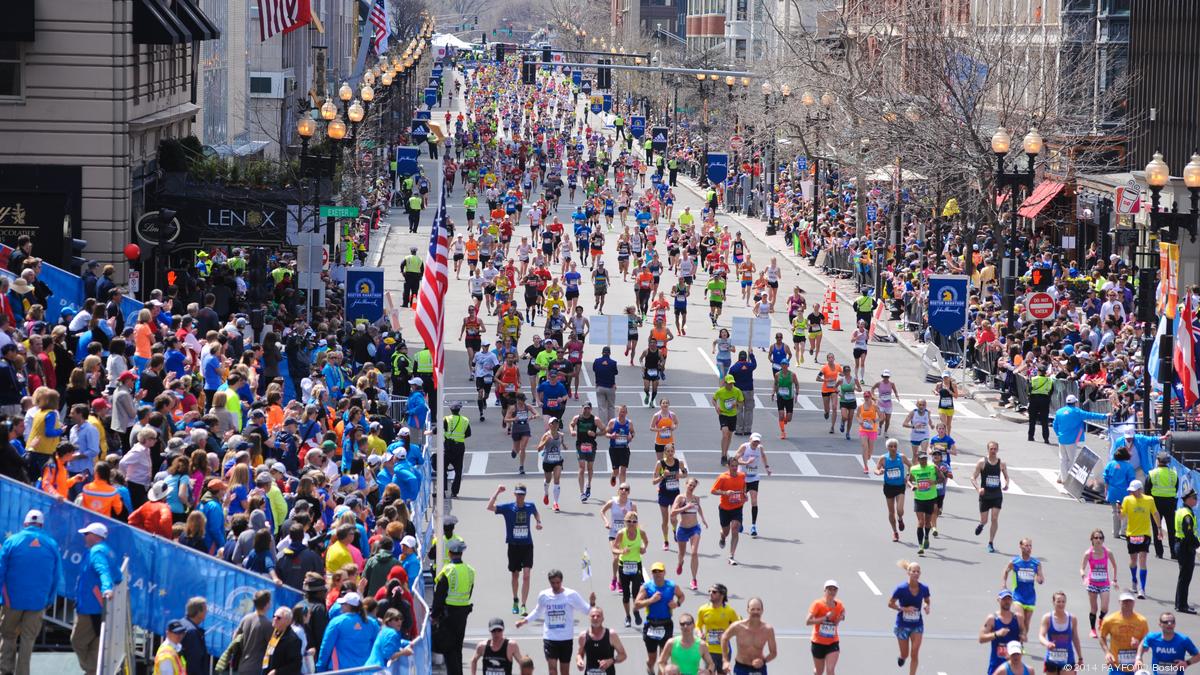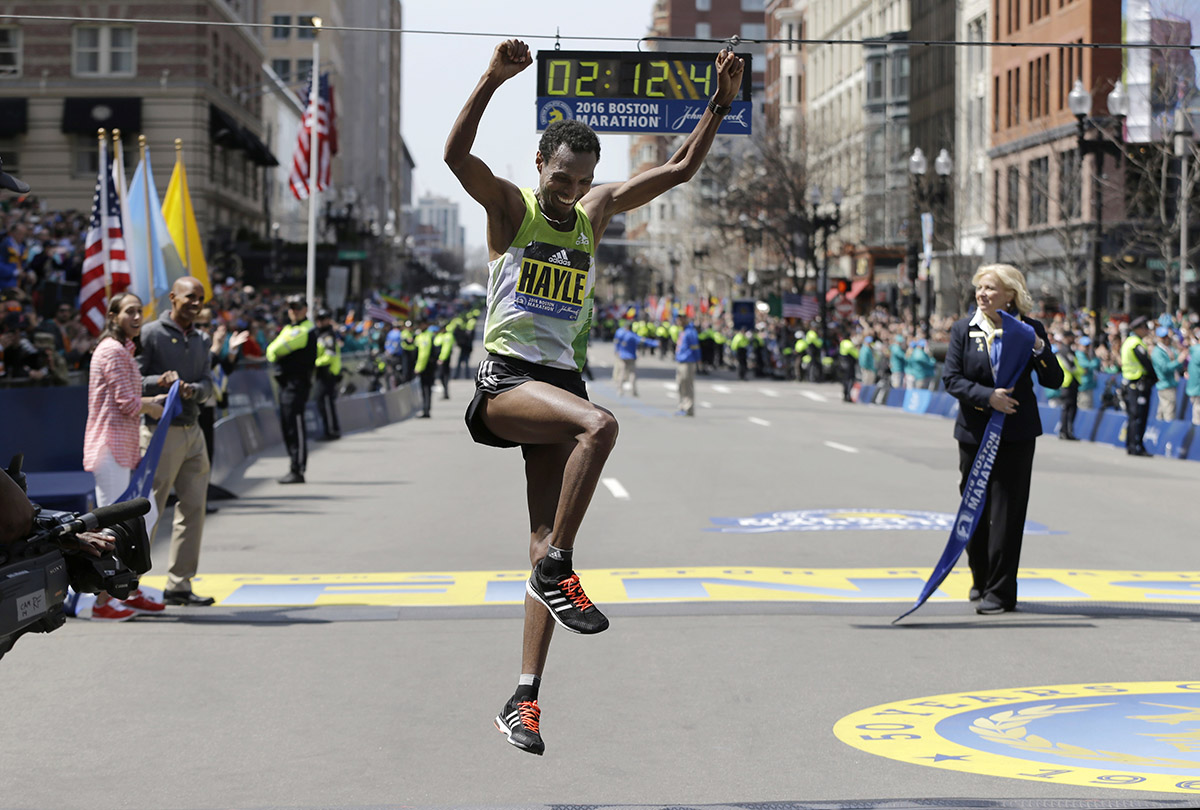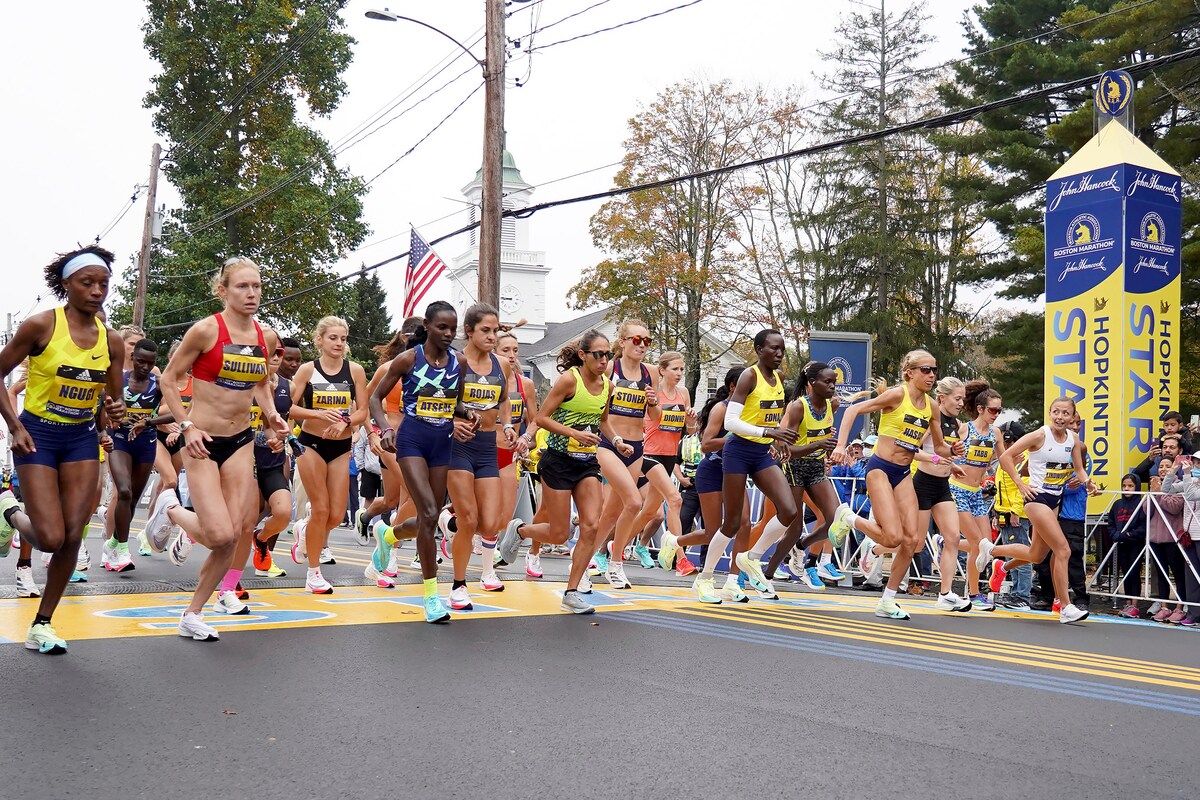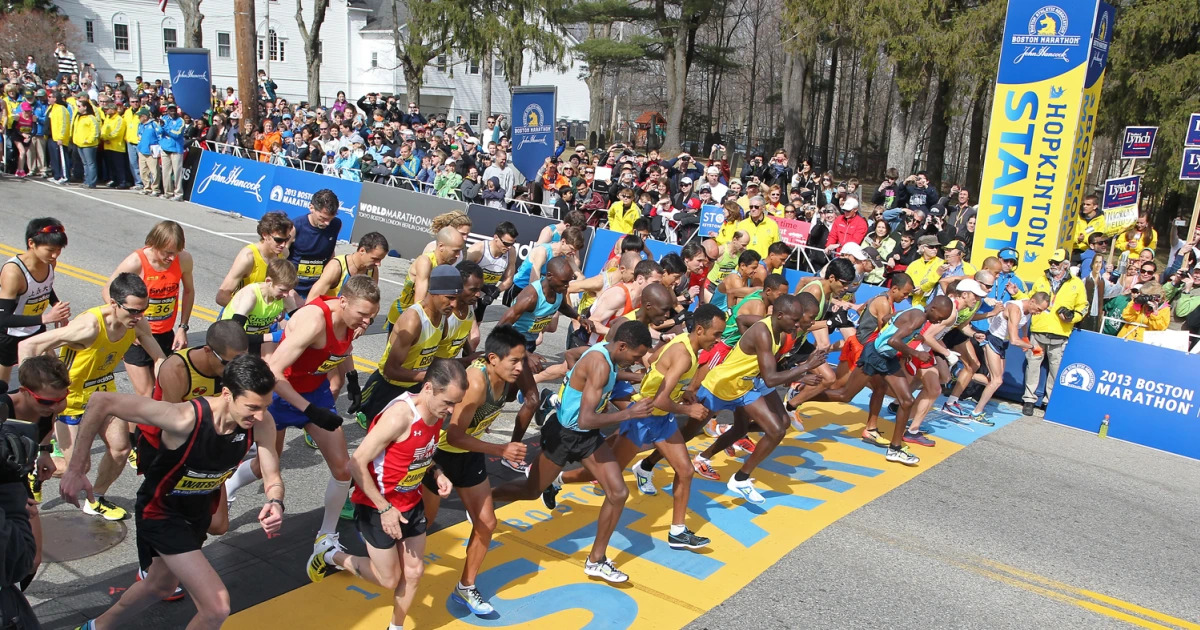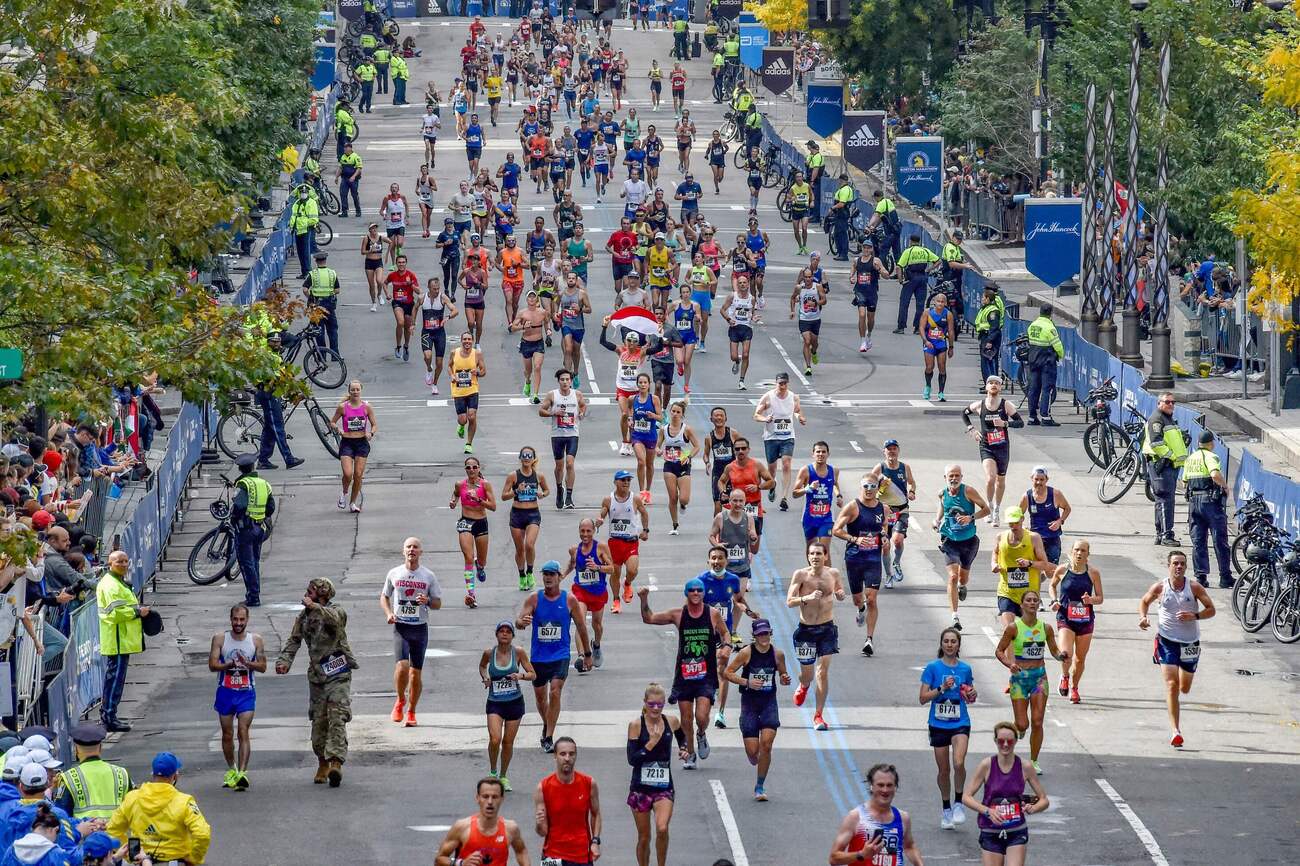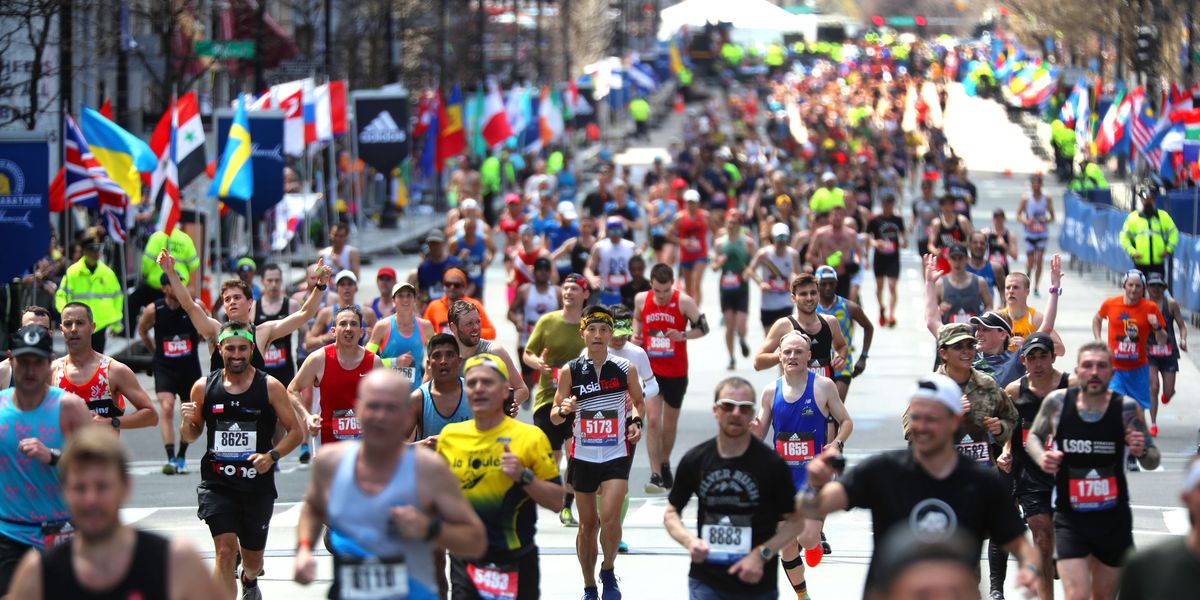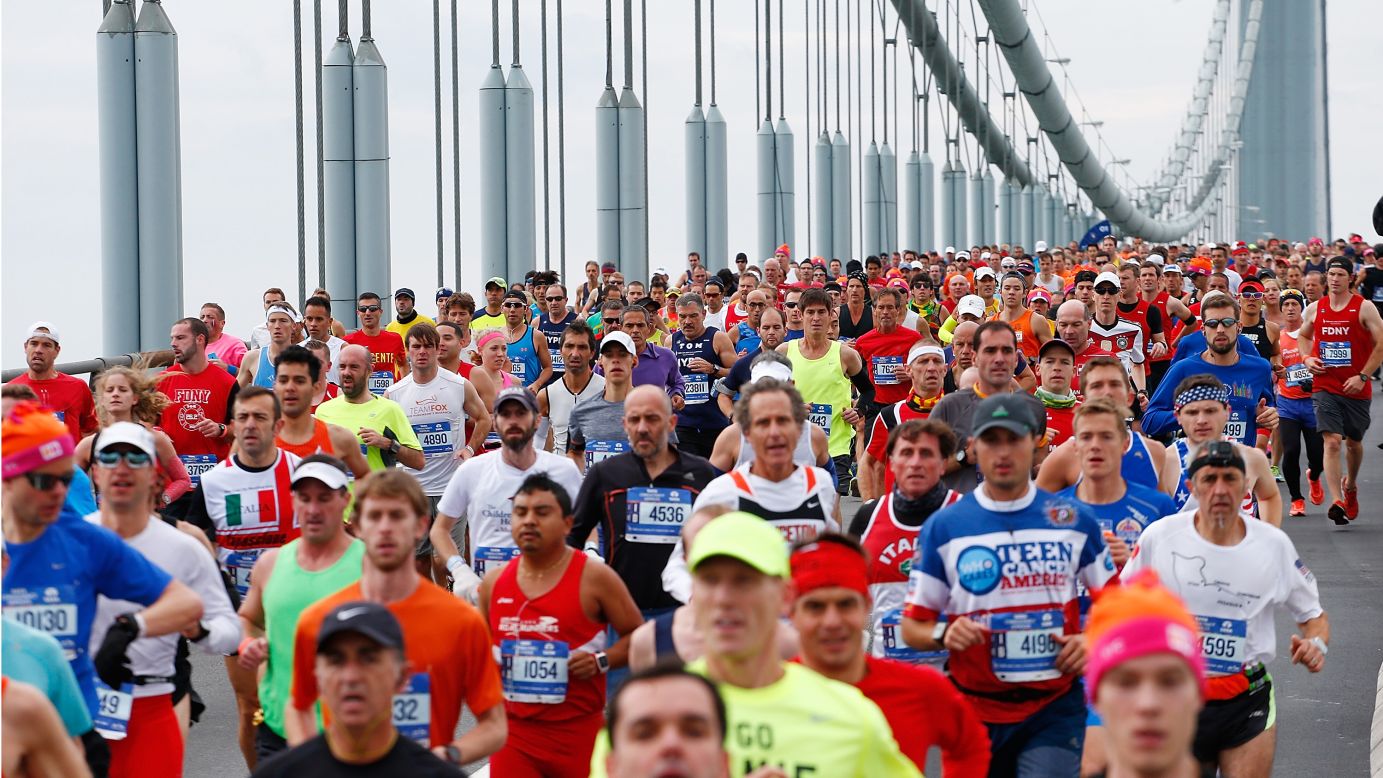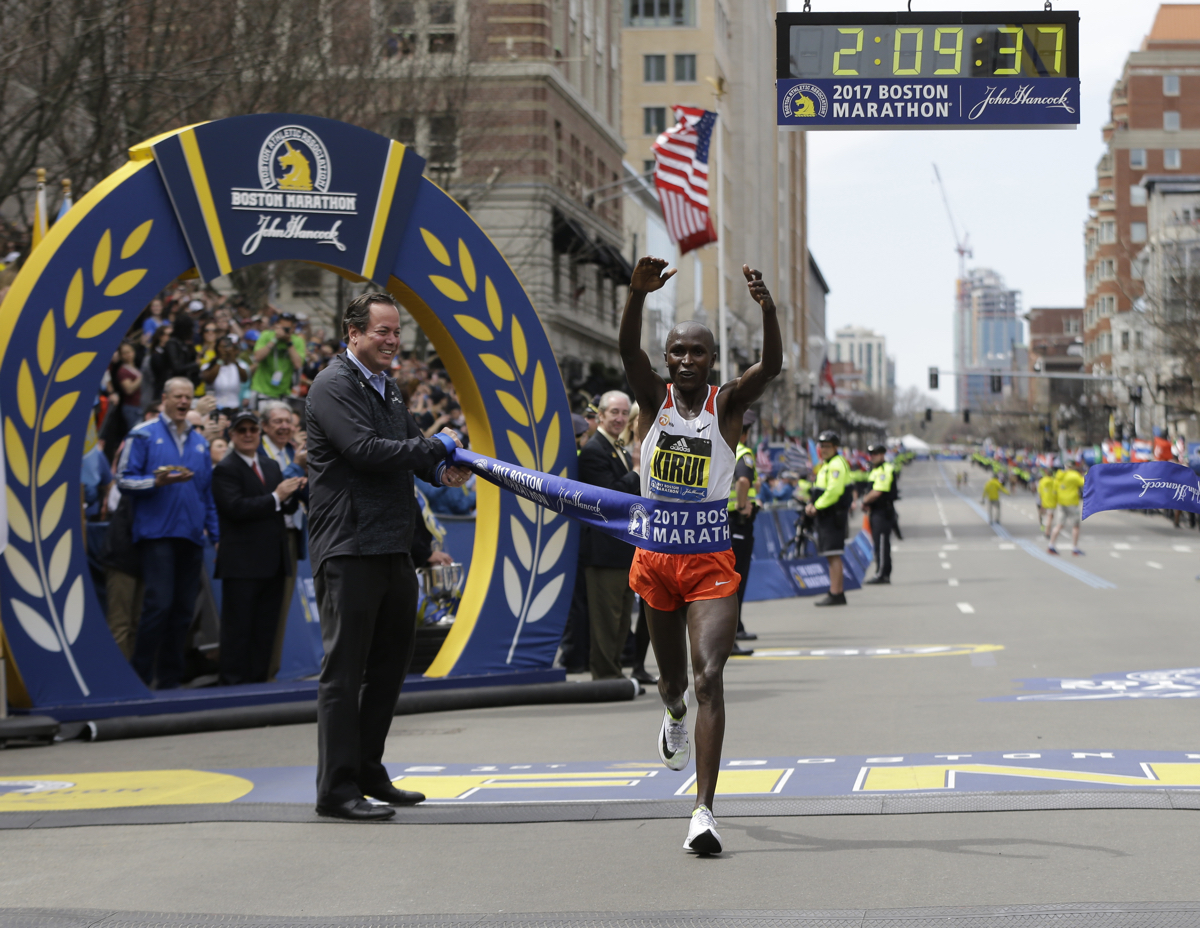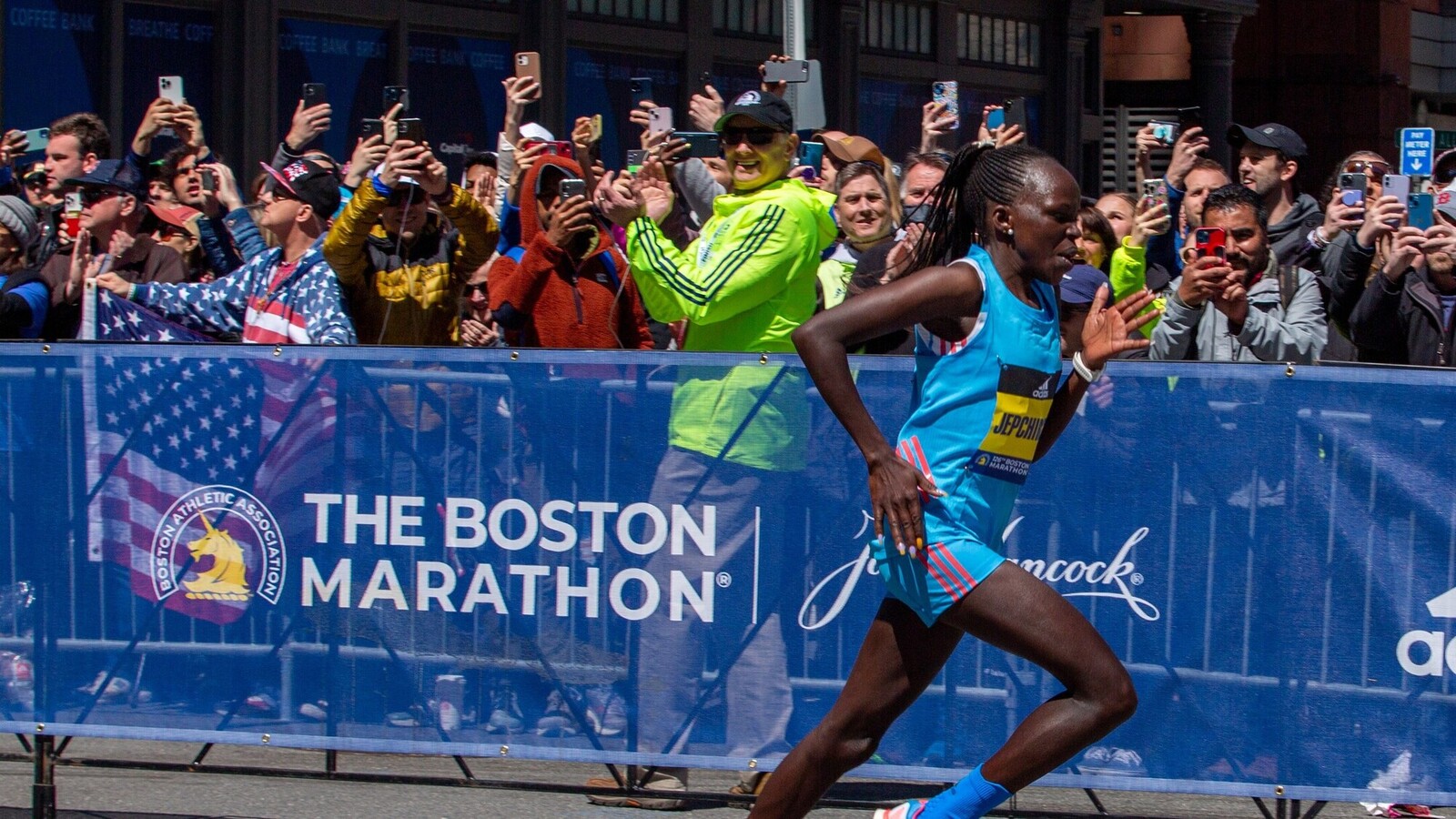Home>Misc>Featured>What Are The Qualifying Times For Boston Marathon
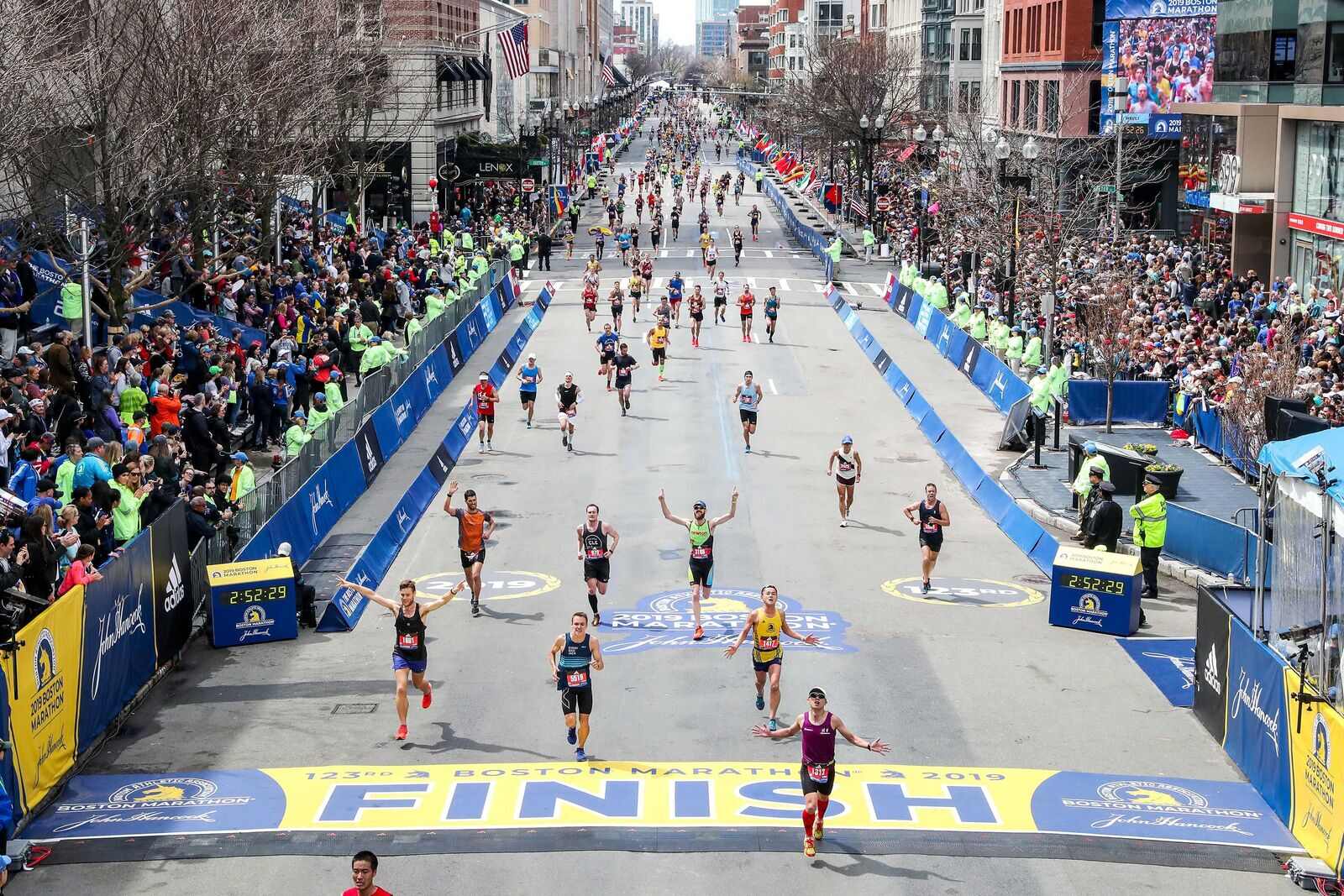

Featured
What Are The Qualifying Times For Boston Marathon
Modified: January 22, 2024
Find out what time you need to qualify for the Boston Marathon. Featured article with all the information you need to reach your goal.
Introduction
The Boston Marathon is one of the most prestigious races in the world, attracting thousands of runners each year. Qualifying for the Boston Marathon is a significant accomplishment for any runner, as it represents a high level of dedication, training, and skill.
Established in 1897, the Boston Marathon is the oldest annual marathon in the world, and it has a rich history that spans over a century. The race is known for its challenging course, enthusiastic crowd support, and the stringent qualifying standards set by the Boston Athletic Association (BAA).
Qualifying for the Boston Marathon is a goal that many runners strive to achieve. It is considered a benchmark of excellence in the running community, symbolizing the pinnacle of endurance and performance. The qualifying times for the Boston Marathon vary depending on the individual’s age and gender, and meeting these standards requires intense training and dedication.
In this article, we will explore the Boston Marathon qualifying times, the factors that can affect these times, and strategies to help you improve your chances of qualifying. We will also discuss the importance of choosing the right race and common mistakes to avoid during the qualifying process. Finally, we will share some tips for a successful race execution, ensuring that you make the most of your efforts to qualify for the Boston Marathon.
Boston Marathon Qualifying Times
The Boston Marathon qualifying times are set by the Boston Athletic Association (BAA) and serve as a benchmark for runners looking to participate in the race. These qualifying times ensure that the Boston Marathon maintains its reputation as a prestigious and competitive event.
The qualifying times are based on age and gender, with stricter standards for younger age groups. The times are updated periodically to reflect the level of competition and to ensure that the race remains both challenging and fair.
For example, the qualifying time for the male 18-34 age group is currently set at 3 hours, while the qualifying time for the female 18-34 age group is set at 3 hours and 30 minutes. As the age group increases, the qualifying times become more lenient to account for the natural decline in performance as athletes age.
It is important for aspiring Boston Marathon participants to be aware of and understand the qualifying times that apply to their age and gender. This knowledge allows them to set realistic goals and create appropriate training plans to meet the standards set by the BAA.
Qualifying for the Boston Marathon requires not only meeting the qualifying time but also gaining acceptance into the race through a registration process. Due to the popularity of the event, it is common for the number of qualifying runners to exceed the available spots, leading to a qualifying time cutoff. This means that even if a runner meets the qualifying time, they may not secure a spot if the field is already full.
In recent years, the popularity of the Boston Marathon has grown significantly, resulting in increased competition for qualifying spots. This has led to a more challenging qualifying process, where runners often have to meet times faster than the official standards to secure a spot.
As a result of these stricter qualifying standards, runners often need to dedicate themselves to months, or even years, of focused training to improve their speed and endurance. This commitment and determination are key factors in successfully meeting the Boston Marathon qualifying times.
Factors Affecting Boston Marathon Qualifying Times
Several factors can influence an individual’s ability to meet the Boston Marathon qualifying times. Understanding these factors can help runners tailor their training and race strategies to improve their chances of qualifying.
1. Age and Gender: The qualifying times for the Boston Marathon vary based on age and gender. Younger age groups typically have faster qualifying times, reflecting the higher level of performance in these categories. It is important to know the qualifying standards that apply to your specific age and gender group.
2. Course Profile: The course profile of a marathon can significantly impact a runner’s ability to meet the qualifying times. The Boston Marathon is known for its challenging course, with rolling hills and varying terrain. Runners should consider incorporating hill training into their preparation to build the necessary strength and endurance.
3. Weather Conditions: Weather conditions on race day can greatly affect performance and, subsequently, qualifying times. Extreme heat, humidity, or strong headwinds can make the race more demanding and slow down runners’ pace. Monitoring weather forecasts and preparing for different weather scenarios is crucial for maximizing performance on race day.
4. Training Regimen: The quality and consistency of training play a vital role in meeting the Boston Marathon qualifying times. Following a well-structured training plan, including a mix of speed workouts, long runs, and recovery days, can help improve speed, endurance, and overall racing performance.
5. Previous Racing Experience: Previous racing experience can also impact a runner’s ability to qualify for the Boston Marathon. Participating in other marathons or time trials can provide valuable insight into pacing, nutrition strategies, and mental toughness, all essential components for a successful Boston Marathon qualifying attempt.
6. Injury Prevention: Injuries can disrupt training and hinder progress towards qualifying for the Boston Marathon. Taking measures to prevent injuries, such as proper warm-up and cooldown routines, incorporating strength and cross-training exercises, and adequate rest and recovery, is essential for staying on track with training and performance goals.
7. Mental Preparation: The mental aspect of marathon running is critical. Developing strategies to stay focused, motivated, and resilient during the race can make a significant difference in achieving the Boston Marathon qualifying times. Techniques such as visualization, positive self-talk, and goal-setting can help runners maintain a strong mindset throughout the race.
It is important to remember that while these factors can influence qualifying times, they are not insurmountable obstacles. With proper preparation, training, and mindset, runners can overcome these challenges and attain their goal of qualifying for the Boston Marathon.
Training Strategies to Qualify for Boston Marathon
Training for the Boston Marathon requires a well-rounded approach that focuses on building both speed and endurance. Here are some effective strategies to help you qualify for the race:
1. Follow a Structured Training Plan: Find a training plan specifically tailored to the Boston Marathon qualifying times and your current fitness level. The plan should include a mix of speed workouts, long runs, and recovery days. Gradually increase your mileage and intensity to build endurance and speed over time.
2. Incorporate Tempo Runs and Speed Workouts: Tempo runs, also known as threshold runs, and speed workouts are key for improving your running pace. Tempo runs involve running at a comfortably hard pace for an extended period, while speed workouts, such as intervals and fartleks, focus on shorter, higher-intensity efforts. These workouts help develop top-end speed and race-specific fitness.
3. Long Runs: Long runs are essential for building endurance. Gradually increase your long run distance to prepare your body for the demands of the marathon. Consider incorporating negative splits, where you run the second half of your long run faster than the first, to simulate the race-day challenge of managing fatigue.
4. Strength Training: Include strength training exercises, such as squats, lunges, and core exercises, in your training regimen. Building strength in key muscle groups can improve running economy and help prevent injuries.
5. Cross-Training: Incorporate cross-training activities, such as swimming or cycling, into your weekly routine. Cross-training provides aerobic conditioning, reduces the risk of overuse injuries, and allows for active recovery on rest days.
6. Nutrition and Hydration: Pay attention to your nutrition and hydration during training. Fuel your body with a balanced diet, including complex carbohydrates, lean proteins, and healthy fats. Experiment with different hydration and fueling strategies during long runs to find what works best for you on race day.
7. Mental Preparation: Train your mind along with your body. Practice mental techniques such as visualization, positive self-talk, and goal-setting to stay focused and motivated during training and on race day.
8. Recovery: Allow time for proper rest and recovery. This includes getting enough sleep, incorporating rest days into your training plan, and scheduling regular massages or foam rolling sessions to aid in muscle recovery.
Remember, consistency and perseverance are key in training for the Boston Marathon. Stay committed to your training plan, listen to your body, and make necessary adjustments along the way. With dedicated training and a focused mindset, you can improve your chances of qualifying for the prestigious Boston Marathon.
Importance of Choosing the Right Race
When aiming to qualify for the Boston Marathon, choosing the right race is of utmost importance. The race you select can significantly impact your chances of meeting the qualifying standards and achieving your goal. Here’s why:
1. Course Certification: To qualify for the Boston Marathon, you must run a USATF-certified marathon that adheres to the specific qualifying standards. Choosing a race that is officially certified ensures that your time will be valid for Boston Marathon qualification. Check with the race organizers or the Boston Athletic Association (BAA) to verify the course certification.
2. Course Profile: The course profile, including elevation changes and terrain, can greatly influence your race performance. Selecting a race with a similar course profile to the Boston Marathon, with rolling hills and varying terrain, can help you better prepare for the challenges you’ll face on race day.
3. Weather Conditions: Consider the typical weather conditions during the race you choose. Extremely hot or humid weather can negatively impact your performance and make it more difficult to meet the qualifying times. Opting for a race with more favorable weather conditions can give you a better chance of achieving your desired time.
4. Race Size and Competition: The size of the race and the level of competition can affect your performance. Larger races often have more spectators and a festive atmosphere, which can provide motivation and support. Additionally, participating in a race with a higher level of competition can push you to run faster and improve your chances of qualifying.
5. Race Timing: Consider the timing of the race in relation to your training schedule. Choosing a race that aligns with the peak of your training, when you are in optimal condition, can increase your likelihood of achieving a qualifying time. Avoid selecting a race too early in your training when you may not be fully prepared.
6. Overall Experience: The overall experience of the race can greatly impact your motivation and enjoyment. Look for races with well-organized logistics, good course support, and a positive reputation from past participants. A well-planned and enjoyable race experience can contribute to a successful qualifying attempt.
7. Backup Plan: It’s essential to have a backup plan in case you are unable to secure a spot in your first-choice race or if unforeseen circumstances arise. Identify alternative races with qualifying opportunities that fit within your training schedule. Having a backup plan ensures that you have additional opportunities to achieve your goal.
Choosing the right race for your Boston Marathon qualifying attempt requires careful consideration of these factors. Doing thorough research and evaluating your personal preferences, abilities, and goals will help you make an informed decision that maximizes your chances of qualifying and provides an enjoyable race experience.
Common Mistakes to Avoid while Qualifying for Boston Marathon
Qualifying for the Boston Marathon is a challenging endeavor that requires careful planning and training. To increase your chances of success, it’s important to avoid common mistakes that can hinder your qualifying efforts. Here are some of the most common mistakes to watch out for:
1. Neglecting Base Building: Building a strong running foundation is crucial for marathon success. One common mistake is rushing into marathon-specific training without sufficient base mileage. Failing to build a solid base can lead to injury and hinder your progress towards meeting the qualifying times. Focus on gradually increasing your mileage and incorporating regular long runs as part of your training plan.
2. Overtraining: Pushing too hard and overtraining can lead to burnout, injuries, and setbacks in your qualifying efforts. Listen to your body and pay attention to signs of fatigue and overuse. Incorporate rest days, recovery runs, and proper cross-training into your training plan to allow your body to recuperate and adapt.
3. Ignoring Strength Training and Cross-Training: Many runners prioritize their running workouts but neglect strength training and cross-training. Strength training helps improve running efficiency and prevents injuries, while cross-training activities like swimming or cycling provide aerobic conditioning without excessive impact. Incorporate these activities into your training routine to promote overall fitness and injury prevention.
4. Neglecting Speed Workouts: Speed workouts are essential for building the necessary speed and efficiency to meet the Boston Marathon qualifying times. Incorporating interval training, tempo runs, and fartlek workouts into your training plan helps improve your aerobic capacity and race-specific pace.
5. Inadequate Recovery: Recovery is just as important as training. Failing to prioritize rest and recovery can lead to fatigue, diminished performance, and increased risk of injury. Make sure to include rest days, proper sleep, and active recovery activities like gentle yoga or foam rolling in your training routine.
6. Poor Race Strategy: Going out too fast, not pacing properly, or failing to adjust to changing weather conditions can negatively impact your qualifying attempt. Develop a race strategy based on your training and experience, and stick to it on race day. Focus on running a consistent pace and maintaining mental resilience throughout the race.
7. Inadequate Nutrition and Hydration: Proper nutrition and hydration are vital for optimal performance and recovery. Failing to fuel your body with the right nutrients before, during, and after training runs can hamper your progress towards qualifying for the Boston Marathon. Consult with a nutritionist or sports dietitian to develop a nutrition plan that suits your individual needs.
Avoiding these common mistakes while training for the Boston Marathon can significantly improve your chances of qualifying. By focusing on proper training, recovery, and race strategy, you’ll be better prepared to meet the qualifying times and achieve your goal of participating in one of the world’s most prestigious marathons.
Tips for Proper Race Execution
Proper race execution is essential in achieving your goal of qualifying for the Boston Marathon. Here are some tips to help you navigate race day and optimize your performance:
1. Start Conservatively: It’s easy to get caught up in the excitement and adrenaline of race day, leading to a fast start. However, starting too fast can deplete your energy reserves early on and make it challenging to maintain your target pace. Start conservatively, allowing yourself to settle into a comfortable rhythm before gradually increasing your speed.
2. Stick to Your Pace Plan: Develop a pacing plan based on your goal time and training. Consistency is key – aim to maintain an even pace throughout the race, avoiding significant deviations. Use a GPS watch or mile markers to monitor your pace and make adjustments if needed, but avoid making drastic changes that can throw off your rhythm.
3. Hydration and Fueling: Stay hydrated and properly fueled during the race. Follow a hydration plan that includes drinking at regular intervals but avoid over-hydrating, which can lead to discomfort and bloating. Practice fueling strategies during training to find what works best for you, whether it’s consuming gels, chews, or sports drinks at appropriate intervals.
4. Mental Resilience: Maintain a positive mindset and stay mentally strong throughout the race. Expect moments of discomfort or fatigue, but remind yourself of your training and the goal you’re working towards. Use visualization techniques to imagine yourself successfully crossing the finish line and qualifying for the Boston Marathon.
5. Break the Race into Segments: Instead of focusing on the entire distance, break the race into smaller segments or milestones. Set mini-goals for each segment, such as reaching certain mile markers or landmarks. This helps make the race feel more manageable and allows you to stay focused on the present moment.
6. Take Advantage of Crowd Support: The Boston Marathon is known for its enthusiastic crowd support. Embrace the energy and encouragement of the spectators along the course. Their cheers and applause can provide a much-needed boost, particularly during challenging moments of the race.
7. Stay Flexible and Adapt: While it’s essential to have a race plan, be prepared to make adjustments as needed. Factors like weather conditions, unexpected obstacles, or changes in your own physical condition may require you to modify your original strategy. Adaptability is key to staying in control and maximizing your performance.
8. Finish Strong: As you approach the final miles of the race, dig deep and give it your all. If you still have some energy left, gradually increase your pace and finish strong. Crossing the finish line with determination and a strong effort can be a confidence booster and help you achieve your qualifying time.
Proper race execution is a combination of smart pacing, strategic fueling/hydration, mental toughness, and adaptability. By following these tips, you’ll be well-equipped to optimize your performance and increase your chances of qualifying for the Boston Marathon.
Conclusion
Qualifying for the Boston Marathon is a significant accomplishment that requires dedication, perseverance, and strategic planning. Meeting the strict qualifying times set by the Boston Athletic Association (BAA) is no small feat, but with the right training strategies and mindset, it is attainable.
In this article, we discussed the importance of understanding the Boston Marathon qualifying times and the factors that can affect your ability to meet them. We explored training strategies that can help you improve your speed, endurance, and overall race performance. Additionally, we emphasized the significance of choosing the right race, avoiding common mistakes, and proper race execution for a successful qualifying attempt.
It’s essential to remember that qualifying for the Boston Marathon is not just about the race itself. It’s about the journey, the commitment to improving as a runner, and pushing your limits. The Boston Marathon represents a goal that motivates and inspires countless runners around the world.
As you embark on this challenging endeavor, stay focused, disciplined, and patient. Trust the process, listen to your body, and surround yourself with a supportive community of fellow runners. Remember that setbacks and challenges are part of the journey, and they only make the achievement even sweeter when you finally reach your goal.
So lace up your running shoes, set your sights on your qualifying time, and let the pursuit of the Boston Marathon be a testament to your determination and passion for running. With the right training, strategy, and mindset, you can make your dream of running the Boston Marathon a reality.
